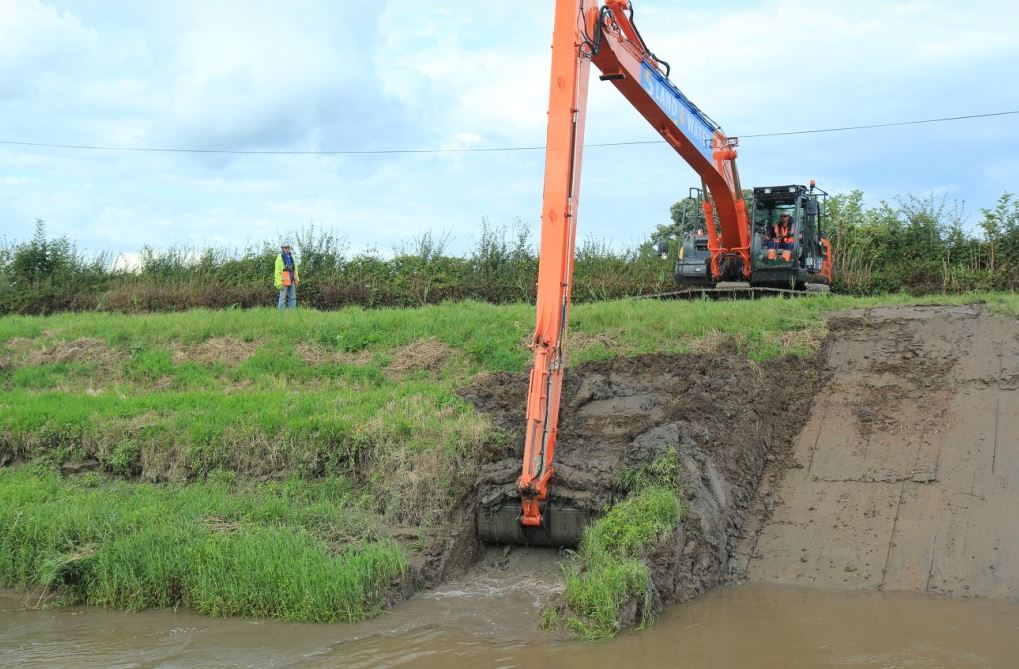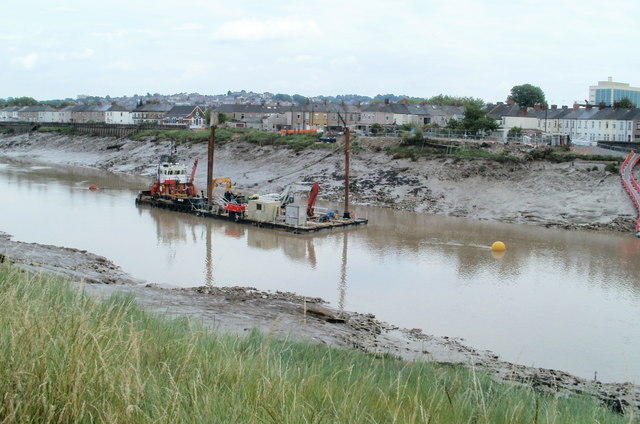Definition
The term dredging is used to refer to the systematic removal of accumulated material from river or other watercourse channels. In its most extreme form dredging may be used to re-align river channels creating linear, canalised watercourses. While implementing such a measure the cross section of channels and waterways is enlarged i.e. their carrying capacity is increased assisting in carrying flood flows. (CIWEM, 2014).Co-benefits and impacts
Dredging of watercourse or i.e. channel enlargement has some drawbacks too: environmental degradation as of the result of the loss of natural channel features and vegetation during the enlargement process (recovery may take a long time); channel instability due to the removal of vegetation that helps to prevent erosion and maintains the integrity of the riverbanks; sedimentation in the engineered channel leading to the formation of shoals and bars, and eventually to the reversion to a smaller, more natural channel (frequent intervention may be required in the form of desilting to keep the desired channel size, again with adverse environmental impacts); a stark and unnatural appearance, particularly in the usual low-flow conditions (which are much more common than flood flows).(Environment Agency, Channel enlargment, accessed on Sept. 2016 )
Conditions
Dredging of watercourse works require careful consideration and the involvement of an experienced geomorphologist to ensure they are stable in the long term and do not result in adverse impacts.(Environment Agency, Channel enlargment, accessed on Sept. 2016 )
Definition (GR)
Ο όρος εκβάθυνση αναφέρεται στη συστηματική αφαίρεση της ιλύος από τα ποτάμια ή κανάλια υδάτινου ρέματος. Στην πιο ακραία της μορφή η εκβάθυνση μπορεί να χρησιμοποιηθεί για την εκ νέου διαμόρφωση της κοίτης, δημιουργώντας ευθύγραμμες κοίτες σε μορφή καναλιού. Όταν εφαρμόζεται ένα τέτοιο μέτρο, η διατομή των καναλιών και υδατορεμάτων διαπλατύνεται. Αποτέλεσμα είναι η αύξηση της χωρητικότητας των υδατορεμάτων και της ικανότητας τους να δεχτούν πλημμυρικές παροχές. . (CIWEM, 2014).Co-benefits and impacts (GR)
Εκτός των άλλων, ο καθαρισμός των υδατορεμάτων ή η διαπλάτυνση τους έχει και ορισμένα μειονεκτήματα: - Περιβαλλοντική υποβάθμιση, ως αποτέλεσμα της απώλειας των φυσικών χαρακτηριστικών και βλάστησης του ρέματος, κατά τη διάρκεια των εργασιών διαπλάτυνσης (η ανάκτηση ίσως διαρκέσει πολύ μεγάλο χρονικό διάστημα). - Αστάθειες στο κανάλι του ρέματος, λόγω της απομάκρυνσης της φυσικής βλάστησης, η οποία βοηθάει στην αποτροπή φαινομένων διάβρωσης και διατηρεί ακέραιες τις όχθες του ρέματος. Η απόθεση ιλύος στο διευθετημένο ρέμα, οδηγεί σε σχηματισμό σωρών και εμποδίων και τελικά στην δημιουργία μικρότερου φυσικού καναλιού (συνήθως μπορεί να απαιτείται συχνός καθαρισμός του καναλιού, με αντίστροφες περιβαλλοντικές επιπτώσεις). - Έντονη αφύσικη μορφολογία εμφανίζει το ρέμα, ιδιαίτερα σε συνθήκες χαμηλής ροής (οι οποίες είναι συνηθέστερες).(Environment Agency, Channel enlargment, accessed on Sept. 2016 )
Conditions (GR)
Τα έργα εκβάθυνσης και καθαρισμού της κοίτης των ρεμάτων απαιτούν προσεκτικό σχεδιασμό και την εμπλοκή εξειδικευμένου γεωτεχνικού, ο οποίος θα διασφαλίσει την μακροχρόνια καλή λειτουργία τους και θα αποφύγει τις οποιεσδήποτε αντίστροφες επιπτώσεις.(Environment Agency, Channel enlargment, accessed on Sept. 2016 )
Legislation
Synonym of Flood management Measure
Last modified: June 20, 2020, 12:28 p.m.


 Ελληνικά
Ελληνικά

